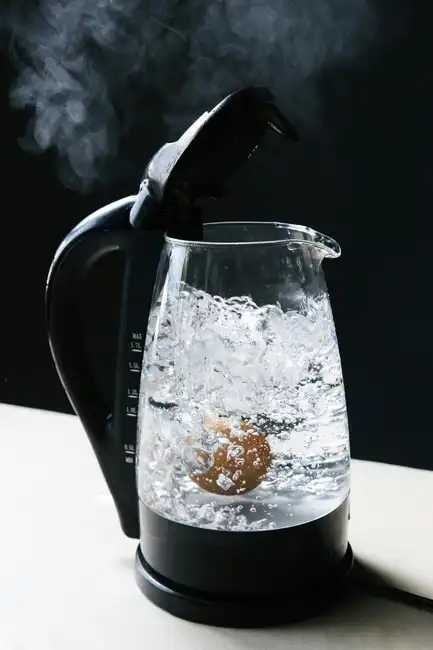
How to Clean Limescale from Electric Hot Water Boilers and Kettles
Electric hot water boilers and kettles are essential household items, but after a period of use, the inner walls of the containers can easily become coated with limescale, affecting their use and appearance. Limescale is a mineral deposit, not dirt, but its accumulation over time can impact the container’s performance, requiring regular cleaning. This article will introduce the causes of limescale and different cleaning methods, helping you keep your electric hot water boilers and kettles clean and fresh.
Causes of Limescale
Limescale is formed from the mineral content in water, which precipitates and accumulates on the inner walls of containers during the boiling or heating process. Hard water contains more minerals, making it more prone to limescale buildup.
How to Clean Limescale
- Using Citric Acid or Vinegar to Clean
Fill the electric hot water boiler or kettle with the maximum water capacity, then add 1 tablespoon (approximately 15 grams) of citric acid or 100 milliliters of vinegar, and stir well. Boil the mixture, then let it sit for 1 hour. After that, discard the hot water, refill the container with the maximum water capacity, and repeat the process to remove any remaining citric acid or vinegar taste. Finally, rinse it clean using the regular cleaning method.
Using Lemons to CleanCut 3 lemons into 4 equal parts and place them in the electric hot water boiler or kettle. Add water to the maximum capacity and boil. Let it sit for 1-2 hours to remove the limescale.
- Using Baking Soda and White Vinegar to Clean
Sprinkle baking soda on the sink or basin, then pour white vinegar over it, and scrub with a toothbrush to remove limescale.
- Using Oranges and Salt to Clean
Cut an orange in half, sprinkle coarse salt on the cut surface, and rub it on the sink or faucet to remove limescale.
Important Notes
- Before cleaning, ensure that the electric hot water boiler or kettle has cooled down to avoid burns.
- During cleaning, do not use hard objects or scrapers, as they may damage the inner walls of the container.
- After cleaning, thoroughly rinse the container to remove any residual substances that may affect the water quality.
Conclusion
Limescale is a white mineral deposit formed by the precipitation of minerals from water, not dirt. However, its accumulation over time can impact the container’s performance and needs to be cleaned regularly. This article has introduced the causes of limescale and different cleaning methods to help you maintain your electric hot water boilers and kettles in good condition.
FAQs
- Is limescale harmful to human health?
Limescale is not harmful to human health.
- What are the main mineral components of limescale?
Limescale is mainly composed of minerals such as calcium carbonate, magnesium hydroxide, and magnesium carbonate.
- Does hard water easily form limescale?
Hard water contains more minerals, making it more prone to limescale buildup.
- Do you need special tools to clean limescale?
When cleaning limescale, do not use hard objects or scrapers, as they may damage the inner walls of the container.
- Do you need to rinse after cleaning limescale?
After cleaning, thoroughly rinse the container to remove any residual substances that may affect the water quality.
